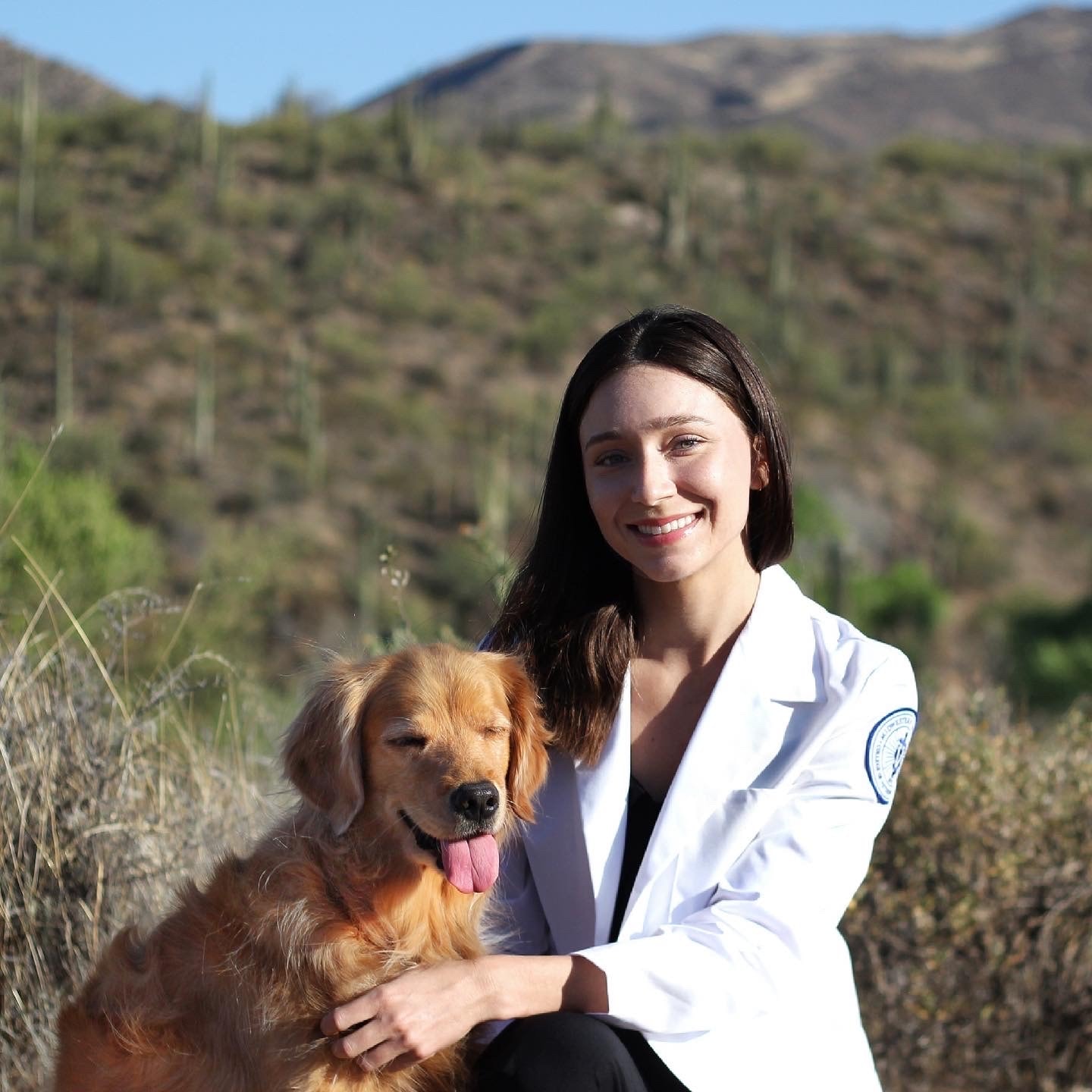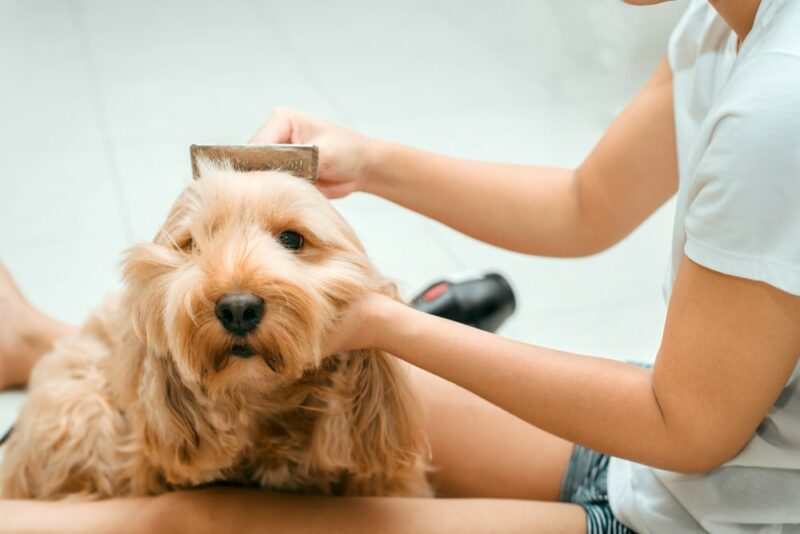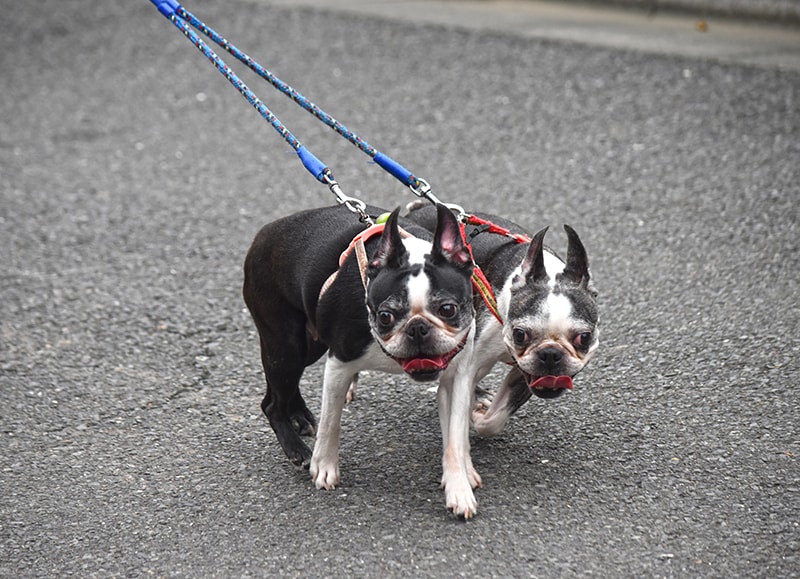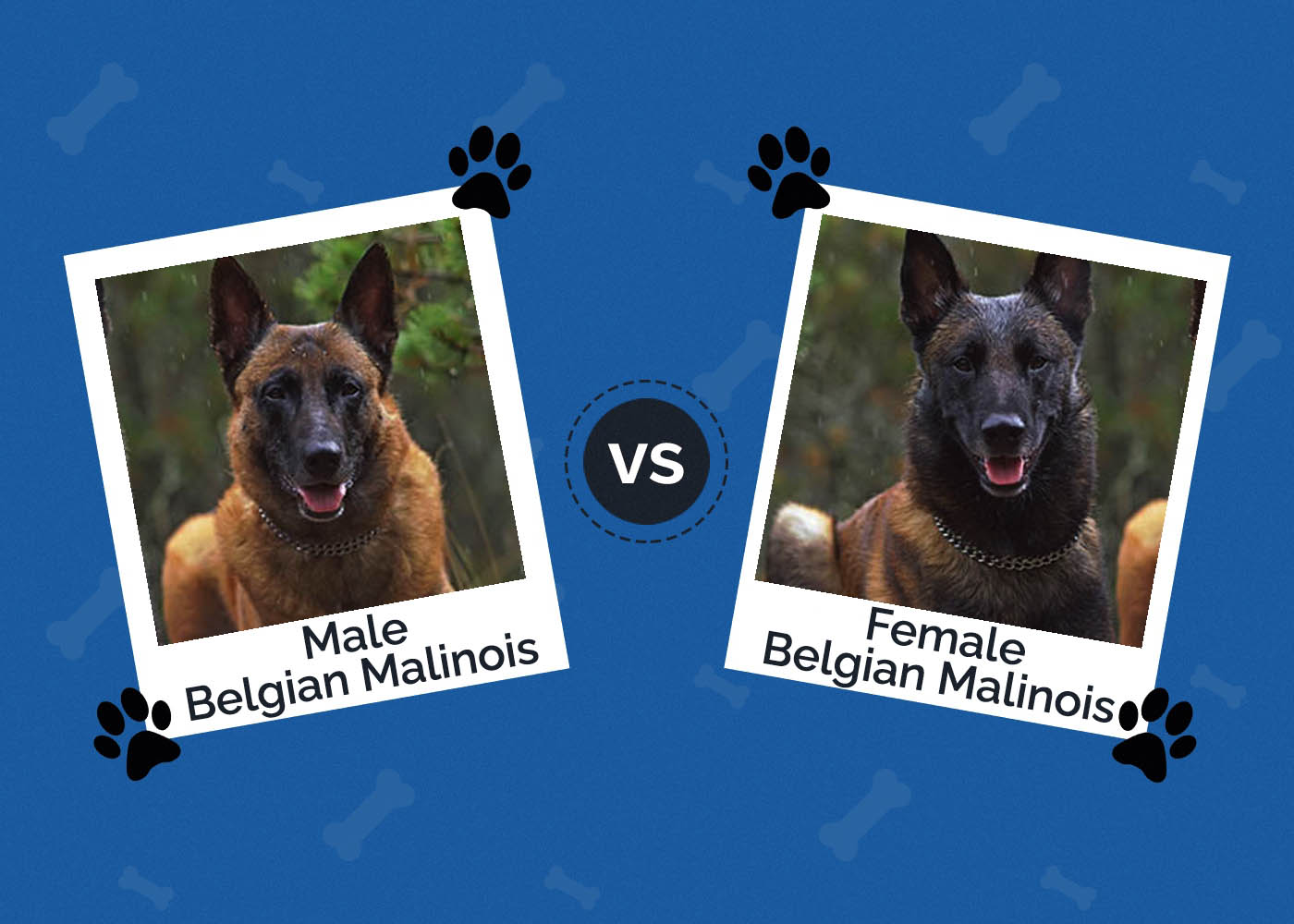Why & How Does a Dog’s Stomach Flip? Vet-Reviewed Facts & Tips

Updated on
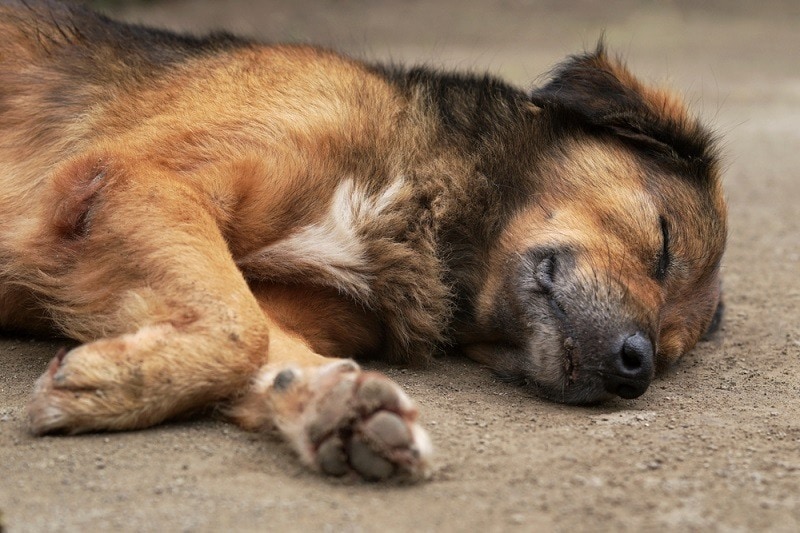
When you hear someone talk about a flip-flopping stomach, they usually don’t mean it literally. But if your dog’s stomach flips, it’s all too real. Stomach flipping is a common name for Gastric Dilatation and Volvulus (GDV), also called a twisted stomach. GDV is exceptionally hazardous and is fatal if untreated.
Read on to learn more about this issue.
What is a Twisted Stomach?
A twisted stomach or volvulus occurs when the stomach turns on its axis and cuts off the entrance and exit to the stomach. It is not known precisely why it happens, but it starts with stomach bloating, which results in your dog’s stomach rotating. This cuts off the blood flow to internal organs and causes other disruptions. Depending on the severity of the case, your dog’s stomach might rotate as much as 360 degrees and entrap the spleen.
GDV starts as stomach distension, or simple bloat. Bloat occurs when gasses and fluids build up in your dog’s digestive system, causing discomfort. Most of the time, bloat passes within hours, but it can sometimes be life-threatening, even if it doesn’t involve twisting.
When stomach twisting occurs, it is immediately life-threatening. The twisting will cut off blood flow to the dog’s stomach and other organs, making it impossible for the stomach to function. It might also cut off blood flow to other internal organs or put pressure on the diaphragm, which makes it difficult for your dog to breathe.
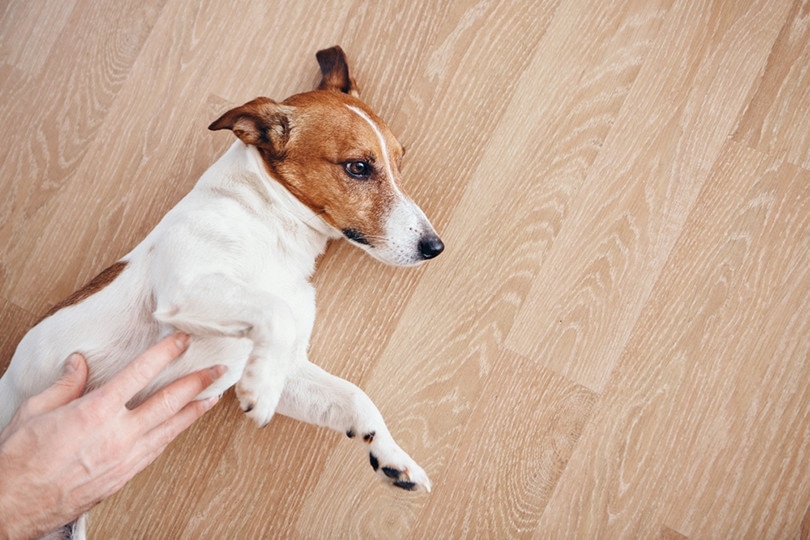
Symptoms of GDV
Stomach flipping can progress quickly, with your dog going from no visible distress to extreme reactions in minutes. Here are some of the signs of GDV:
- Swollen, distended stomach/abdomen
- Hard stomach that makes a “ping” noise when tapped
- Attempts to vomit that produce no vomit
- Retching
- Lethargy
- Difficulty breathing
- Weak pulse
- Rapid heartbeat
- Collapse
- Pale gums or excessive saliva
Treatment
If you suspect your dog has GDV, seek veterinary treatment immediately. Your vet will take an X-ray to determine if your dog’s stomach has flipped. If it has, your dog will need emergency surgery.
Your vet will likely administer fluids and pain relief, then release the pressure from your dog’s stomach via a needle or stomach tube before surgery to repair your dog’s stomach. This is a major surgery that will require several days of close monitoring.
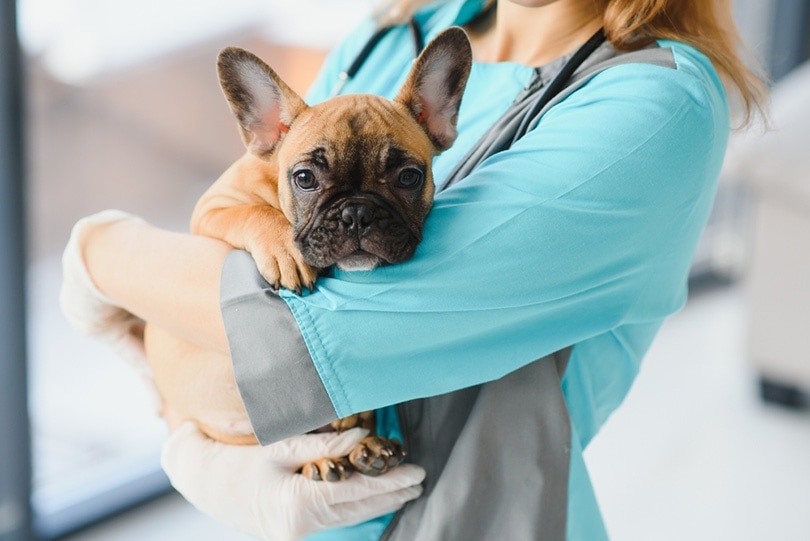
What Causes a Twisted Stomach?
It is not known what causes twisted stomachs, but some contributing factors include having a deep chest, being underweight, being stressed, and being fed once a day. Some other predispositions of GDV include overeating or eating too quickly, drinking too much water in a short period, eating large objects or swallowing non-food objects, and exercising after a meal.
Male dogs are more likely to experience a twisted stomach, which becomes more common as they move into their senior years. In addition, some breeds are genetically predisposed to GDV. They are generally large, deep-chested dogs taller than they are wide; however, dogs of any species can develop GDV.
- Akita
- Basset Hound
- Bernese Mountain Dog
- Bloodhound
- Boxer
- Bullmastiff
- Chow Chow
- Collie
- Doberman Pinscher
- German Shepherd
- Gordon Setter
- Great Dane
- Great Pyrenees
- Greyhound
- Irish Setter
- Irish Wolfhound
- Leonberger
- Mastiff
- Newfoundland
- Old English Sheepdog
- Retriever
- Rhodesian Ridgeback
- Saint Bernard
- Scottish Deerhound
- Standard Poodle
- Weimaraner
Tips for Prevention
Although there’s no way to guarantee your dog avoids GDV, there are some ways that you can minimize the risk of bloat and stomach flipping. One of the most important ways is to ensure your dog doesn’t eat too much too quickly. You can split your dog’s food into smaller meals, limit the amount of water directly after meals, and use feeding bowls to slow down eating.
You can also make diet changes gradually to avoid gut flora reactions that can cause excessive gas. Avoid raised food trays as they can increase the risk of GDV. Monitor your dog when eating bones or chewing on toys to prevent swallowing large pieces.
Another option is preventative surgery. Gastropexy is a surgery sometimes done when your dog is spayed or neutered. This drastically reduces the risk of GDV in large dogs with a high risk of developing the disease.
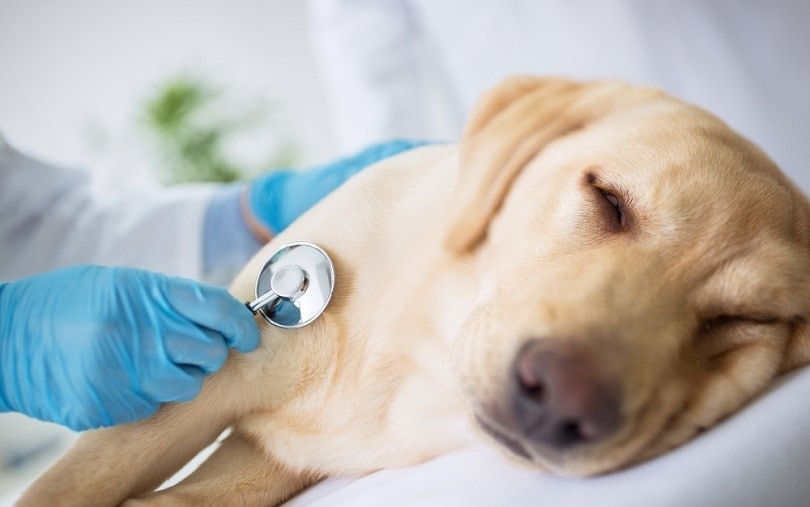
Conclusion
As you can see, stomach flipping is no minor condition. It’s a severe threat to your dog’s health. The good news is that even though treating it is no walk in the park, most dogs who are given prompt veterinary treatment will recover from a twisted stomach, but sadly, mortality rates can still be as high as 33%.
Because of that, every dog owner should know the symptoms and be ready to seek help if your dog experiences GDV.
See also:
- Why Is My Dog’s Stomach Hard? 5 Possible Serious Reasons
- How Do Dogs Feel Pain? Important Care Facts
Featured Image Credit: pinandika anindya guna, Shutterstock
